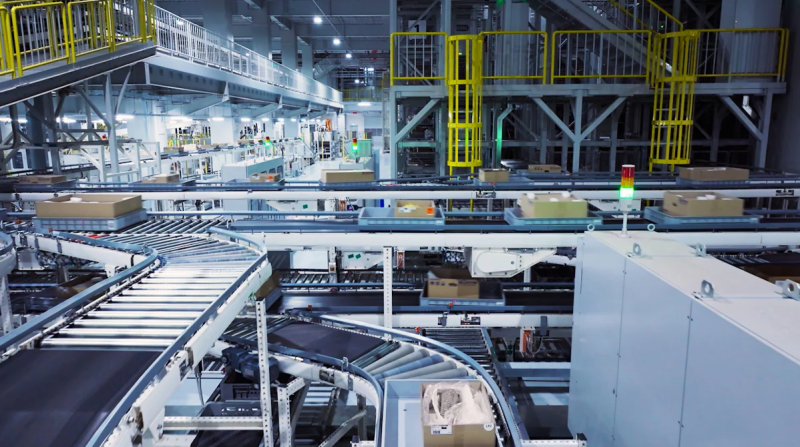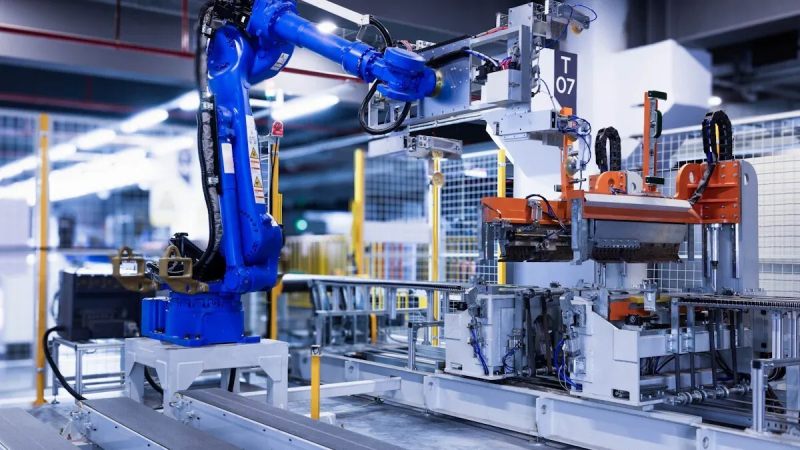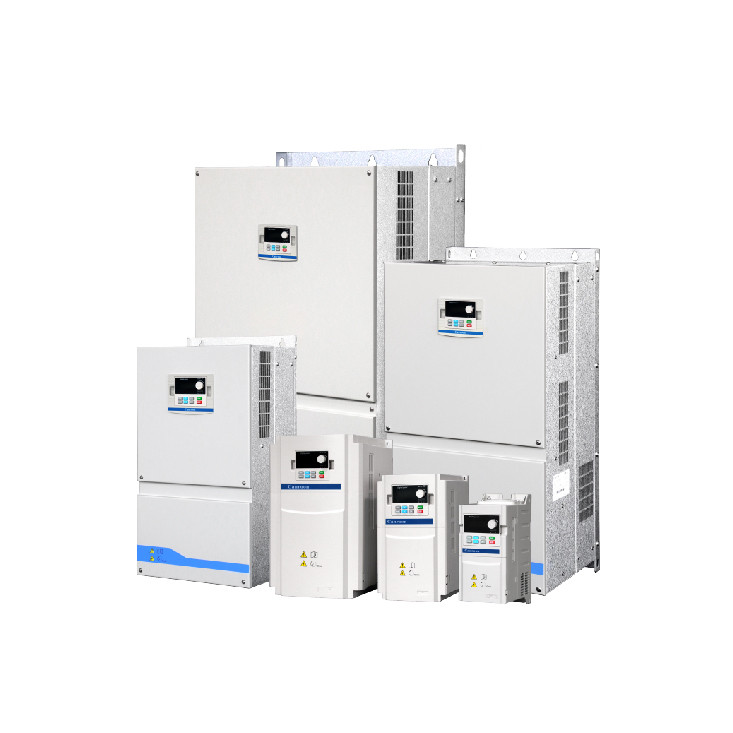

You find freqency inverter technology in many factories today. The market was worth about USD 1.2 billion in 2023. It may become twice as big by 2032. It grows by 6.2% every year. Brands like ABB, Siemens, Schneider Electric, Mitsubishi Electric, and Yaskawa Electric are top companies. People trust these brands for good and strong solutions in tough places.
Key Takeaways
- Frequency inverters change how fast motors run. This helps save energy and makes machines work better in factories.
- Important things to look for are settings you can change, safety features, and ways to connect to other devices. These help the inverter fit in with your system.
- Picking the best inverter depends on what you need it to do. You may want to control speed or save energy.
- Well-known brands like ABB, Siemens, and Yaskawa make good inverters. Each brand has special features for different factory jobs.
- Make sure the inverter works with your machines. Think about how much money you can save over time when you choose one.
Industrial Frequency Inverter Criteria

Performance Factors
When picking a frequency inverter for your factory, you should look at some important things. These things help your machines work well and stay safe. Here is a table that shows the most important things to check and why they matter:
You should also think about how multilevel inverters work. These inverters help big machines use less energy and waste less power.
Key Features
The best frequency inverters have many helpful features. These features make your work easier and help machines last longer. The table below shows some features you should look for:
Programmable settings let you change things to fit your needs. Safety functions protect workers and machines. Communication lets your inverter talk to other machines. IoT helps you watch and control your system from anywhere.
Application Needs
You need to pick a frequency inverter that fits your job. Different jobs need different things. Here is a table that shows what frequency inverters do for factories and processing:
Tip: Always check if your inverter fits your system and is reliable. If it fits well, you will have fewer problems. Reliable inverters last longer and need less fixing. Some jobs care more about one thing than another, so think about what you need.
Frequency inverters help you save energy because motors only run as fast as needed. You get better control over your machines, so you can make quick changes and keep things working smoothly.
Frequency Inverter Reviews

Canroon CV900N Series
Many factories use the Canroon CV900N Series. This frequency inverter helps you control motors well. You can use it for pumps, fans, and conveyor belts. The CV Series works with many machines. It is easy to set up and use.
Key Features:
- Wide voltage range for different motors
- Built-in safety systems
- Smart cooling for long life
- Fast response to speed changes
- Remote monitoring with IoT support
Pros:
- Simple to install and operate
- Works well in tough places
- Saves energy and cuts costs
Cons:
- May not have features for very complex jobs
Best Use Cases:
- Water treatment plants
- HVAC systems
- Food processing lines
User Feedback:
Most users say the CV Series is good for daily work. You get fewer problems and better machine control. You can trust this frequency inverter for most factory jobs.
Siemens SINAMICS G120
The Siemens SINAMICS G120 is used in many industries. You can use it for pumps, fans, and compressors. It helps save energy and control motor speed.
Key Features:
- Modular design for easy upgrades
- Advanced safety functions
- Flexible communication options
- High efficiency for energy savings
Pros:
- Easy to expand and change
- Works with many motors
- Strong safety features
Cons:
- May cost more than basic models
Best Use Cases:
- Chemical plants
- Building automation
- Conveyor systems
User Feedback:
People like the G120 for easy setup and safety. You can change settings fast and keep machines running well.
ABB ACS880
You find the ABB ACS880 in heavy-duty factories. This frequency inverter gives strong control and saves energy. It works well for steel plants, paper mills, and tough jobs.
Key Features:
Pros:
- Strong design for hard jobs
- Advanced control for many motors
- Saves energy with smart features
Cons:
- Too complex for simple jobs
- Higher cost for basic tasks
Best Use Cases:
- Steel plants
- Paper mills
- Mining operations
User Feedback:
- Users like the ACS880 for its strong build and features.
- A steel plant showed better control and less downtime, which helped productivity.
Schneider ATV600
The Schneider ATV600 series helps you control pumps, fans, and conveyors. You use this frequency inverter for automation and process control. It saves energy and gives strong monitoring.
Key Features:
- Advanced motor control
- Real-time monitoring and diagnostics
- Robust construction for tough jobs
- Energy-efficient design
Pros:
- Reliable in busy places
- Helps with predictive maintenance
- Easy to monitor and fix problems
Cons:
- May be too advanced for small jobs
Best Use Cases:
- Water treatment
- HVAC systems
- Industrial automation
User Feedback:
You get less downtime and lower repair costs. Many users like the strong build and smart monitoring features.
Yaskawa GA700
The Yaskawa GA700 is a flexible frequency inverter for many jobs. You use it for manufacturing, HVAC, and conveyor systems. It gives precise control and works well in tough places.
Pros:
- Durable and needs little care
- Runs for ten years at 80% load
- Works up to 50°C without trouble
- Low failure rates
Cons:
- May cost more than basic models
User Feedback:
- Users say it needs very little service.
- The design cools braking resistors well, so machines work better.
Lenze i500 Series
You see the Lenze i500 Series in packaging and materials handling. This frequency inverter saves energy and fits in small spaces. You can change its setup for different machines.
Pros:
- Good for packaging and handling materials
- Easy to install side by side
- Reduces wiring and heat loss
Cons:
- May not suit very large machines
Best Use Cases:
- Packaging lines
- Conveyor belts
- Small machine automation
User Feedback:
- Users like the cooling system and easy setup.
- You can install many units together, which saves space and time.
MICNO Medium Voltage Inverter
The MICNO Medium Voltage Inverter helps with medium voltage jobs. You use it for big motors and tough working conditions. It gives strong control and keeps your system safe.
Pros:
- Great for medium voltage applications
- Strong safety features
- Easy to use and maintain
Cons:
- May be too much for small jobs
Best Use Cases:
- Mining
- Oil and gas
- Large water pumps
User Feedback:
You get better efficiency and lower energy use. Many users say it is easy to operate and keeps machines safe.
Frequency Inverter Comparison
Specs Table
You can look at the main specs to compare top frequency inverters. The table below shows which model might work best for you.
Tip: Always check the voltage and power rating before you pick a frequency inverter. This helps you stop problems and keeps machines safe.
Strengths & Weaknesses
It is important to know what each frequency inverter does well and what it does not. This helps you choose the right one for your work.
Canroon CV Series
- Strengths: Simple to set up, strong safety, remote monitoring.
- Weaknesses: Not many advanced features for hard jobs.
Siemens SINAMICS G120
- Strengths: Modular design, easy upgrades, strong safety.
- Weaknesses: Costs more for basic jobs.
ABB ACS880
- Strengths: Ultra-low harmonic drives, saves energy, tough build.
- Weaknesses: Hard to set up, expensive for simple needs.
Schneider ATV600
- Strengths: Real-time checks, strong design, saves energy.
- Weaknesses: May be too advanced for small systems.
Yaskawa GA700
- Strengths: Lasts long, needs little care, works in heat.
- Weaknesses: Costs more than basic models.
Lenze i500 Series
- Strengths: Small size, easy to install, good for packaging.
- Weaknesses: Not good for big machines.
MICNO Medium Voltage
- Strengths: Runs big motors, strong protection, easy to fix.
- Weaknesses: Too strong for small jobs.
You should also think about how well the inverter works and how much harmonic distortion it makes. Multilevel inverters, like those in the ABB ACS880 and MICNO models, help lower total harmonic distortion (THD). Tests using MATLAB/Simulink show that IGBT and MOSFET-based voltage source inverters keep THD low in resistive loads. Lower THD means machines run smoother and the power grid stays steady.
Note: Picking an inverter with low harmonic distortion helps protect your equipment and saves energy over time.
Choosing the Right Frequency Inverter
Application Assessment
You need to pick the right frequency inverter for your job. First, think about what your machines do every day. Some jobs need quick and exact control. Other jobs only need simple speed changes. Here are some steps you can use:
- Figure out if you need high or low control accuracy.
- See if you want fast response or just normal control.
- Write down any special features your process needs.
You can use this table to help compare what is important:
Tip: Jobs like robotics need inverters that react fast and adjust finely.
Power & Voltage
You should check the power and voltage before you choose. The right match keeps machines safe and working well. Variable Voltage Variable Frequency (VVVF) inverters let you change motor speed by changing voltage and frequency. This gives better control and saves energy.
- Look at your power source and make sure it matches the inverter.
- Check the voltage range and power size.
- Make sure the inverter can handle your machine’s load.
If you use solar panels or batteries, a good inverter turns DC power into AC power with little energy loss. This helps your whole system work better.
Budget Factors
Think about both the price and how much you save later. Sometimes, paying more at first means you spend less over time.
- Compare the first cost with how much you save on energy.
- See if the inverter is easy to fix and if parts are easy to get.
- Look for models that need less care.
Note: Saving money over time can matter more than the lowest price.
Brand Support
Good brand support makes your work easier. A strong warranty helps you feel safe. Fast customer service helps you fix problems quickly. Trusted brands often have better quality and more help after you buy.
- Pick brands with local help and quick service.
- Choose inverters with a clear warranty.
- Look for companies known for good help after you buy.
If you need help picking a manufacturer, use guides and check reviews from other users. This helps you find a reliable partner for your business.
- There are lots of strong frequency inverters you can pick for your factory.
- The Canroon CV Series is easy to set up and keeps things safe.
- ABB, Siemens, Schneider, Yaskawa, Lenze, and MICNO have good choices for special jobs.
- Make sure the inverter’s features fit your machines and what you need at work.
If you want expert help, talk to Canroon or another trusted expert. You will get better results if you choose the right inverter for your job.
FAQ
What does a frequency inverter do?
A frequency inverter lets you change the speed of an electric motor. You can control how fast or slow your machines work. This helps you save energy and keep your equipment safe.
How do you choose the right frequency inverter?
You should check your motor type, power needs, and job requirements. Look for safety features and easy controls. Pick a trusted brand with good support.
Can frequency inverters help save energy?
Yes! You can lower energy use by adjusting motor speed. Machines only run as fast as needed. This reduces waste and saves money.
What is harmonic distortion, and why does it matter?
Harmonic distortion means extra electrical noise in your system. You want low harmonic distortion. It keeps your machines running smoothly and protects your power grid.
Do you need special training to use a frequency inverter?
You do not need advanced training for basic use. Most inverters have simple menus and guides. For complex setups, you should ask an expert for help.
Sign up for updates
